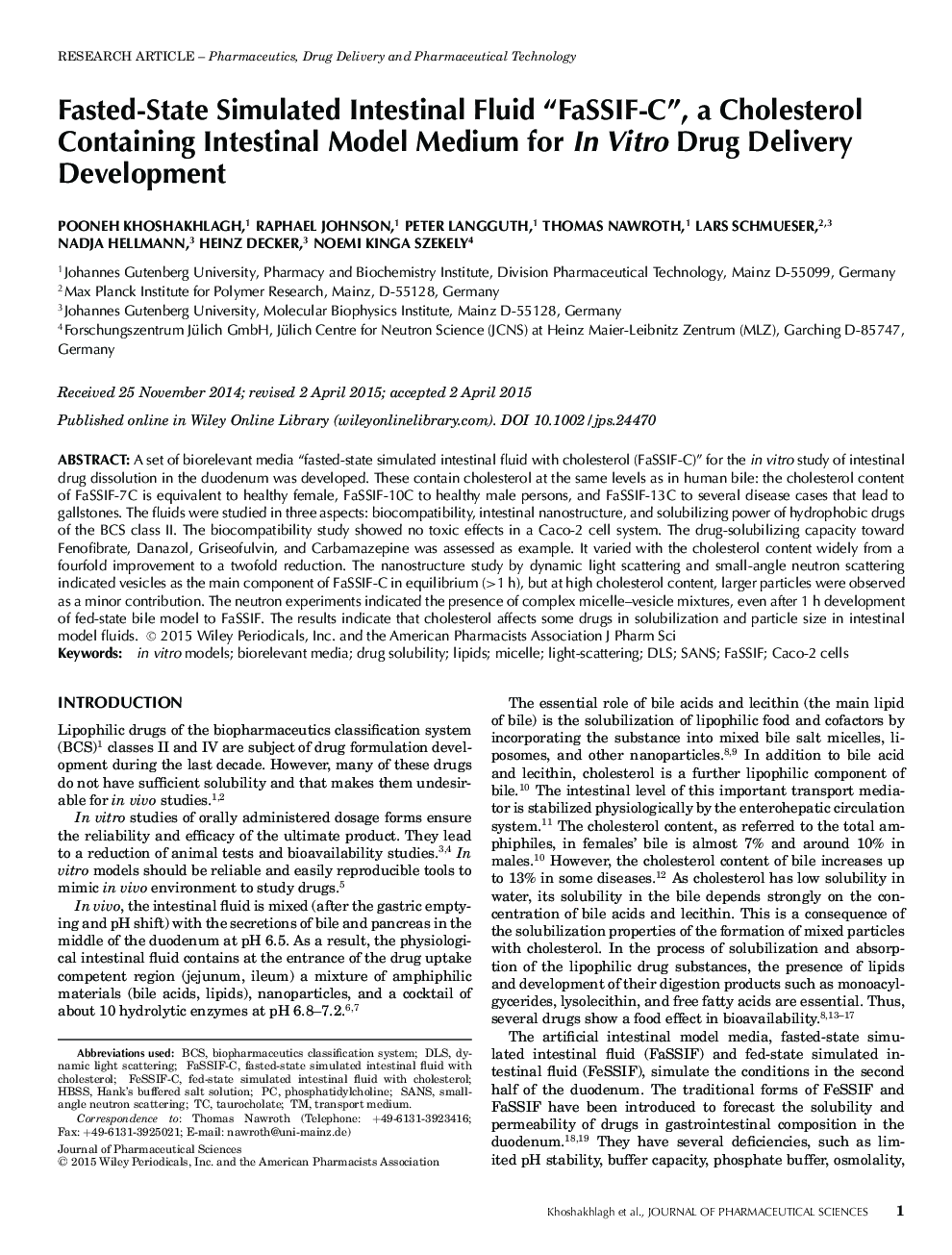| Article ID | Journal | Published Year | Pages | File Type |
|---|---|---|---|---|
| 2484517 | Journal of Pharmaceutical Sciences | 2015 | 12 Pages |
Abstract
A set of biorelevant media "fasted-state simulated intestinal fluid with cholesterol (FaSSIF-C)" for the in vitro study of intestinal drug dissolution in the duodenum was developed. These contain cholesterol at the same levels as in human bile: the cholesterol content of FaSSIF-7C is equivalent to healthy female, FaSSIF-10C to healthy male persons, and FaSSIF-13C to several disease cases that lead to gallstones. The fluids were studied in three aspects: biocompatibility, intestinal nanostructure, and solubilizing power of hydrophobic drugs of the BCS class II. The biocompatibility study showed no toxic effects in a Caco-2 cell system. The drug-solubilizing capacity toward Fenofibrate, Danazol, Griseofulvin, and Carbamazepine was assessed as example. It varied with the cholesterol content widely from a fourfold improvement to a twofold reduction. The nanostructure study by dynamic light scattering and small-angle neutron scattering indicated vesicles as the main component of FaSSIF-C in equilibrium (>Â 1Â h), but at high cholesterol content, larger particles were observed as a minor contribution. The neutron experiments indicated the presence of complex micelle-vesicle mixtures, even after 1Â h development of fed-state bile model to FaSSIF. The results indicate that cholesterol affects some drugs in solubilization and particle size in intestinal model fluids.
Keywords
Related Topics
Health Sciences
Pharmacology, Toxicology and Pharmaceutical Science
Drug Discovery
Authors
Pooneh Khoshakhlagh, Raphael Johnson, Peter Langguth, Thomas Nawroth, Lars Schmueser, Nadja Hellmann, Heinz Decker, Noemi Kinga Szekely,
